In this article, I explain how to travel to the Erg Chigaga desert in Morocco to take great landscape photos of the towering dunes and vast expanses of golden sand.
I've visited this sea of sand three times during three different trips to Morocco between 2019 and 2023, and I can't get enough of it. If you also want to visit this unique landscape, the tips from this article will ensure a smooth travel experience.
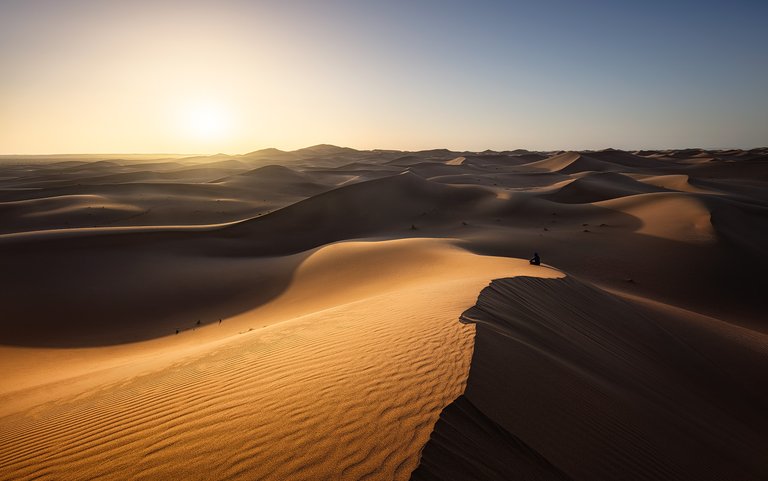
How to Get to the Erg Chigaga
The Erg Chigaga is located in the remote south of Morocco, close to the Algerian border. It is the perfect place for landscape photography since it's not as crowded as the Erg Chebbi, for example. But how do you get there?
Most tours into the Erg Chigaga start in Marrakech. From there, it is a long drive across the High Atlas. It typically takes between 8 and 9 hours and can be done in one day. If this sounds too long, I recommend splitting it and planning a stop in Ait Ben-Haddou or the Hara Oasis. If you haven't been to Ait Ben-Haddou yet, I would make it a mandatory stop. It's not been a film set for many movies without reason, including the famous Gladiator movie.
If you can't find affordable flights to Marrakech, consider visiting the Erg Chigaga from Agadir. On this route, I recommend a stop in Tafraoute to explore the Anti Atlas. The landscape around Trafroute is full of huge boulders and photo locations.
One question that is still open is: Which of the many tour companies should you pick? The Erg Chigaga is no self-drive destination. You require an experienced driver with a 4x4 vehicle. Before I visited Morocco for the first time, I did intensive research and chose Wild Morocco and continued to use them for all my visits. Aside from the tour options they have on their homepage, you can also let them design a custom tour for you. They work together with Camp Al Koutban, which is one of the best-located camps in the erg.
Because I love traveling with Wild Morocco so much, I decided to offer a photo tour through the south of Morocco together with them.
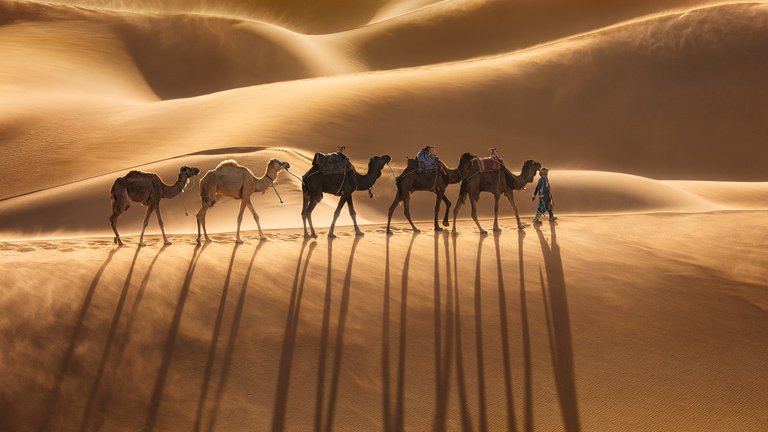
When to Visit the Desert in Morocco
I usually visit Morocco in winter. When it gets cold in Europe, you can still enjoy temperatures above 20°C in Morocco. It's the perfect climate for traveling into the desert, which is not a place you'd want to explore in the summer months.
I visited once in early December and twice in February. Each time I had beautiful, clear night skies to marvel at. The nights in the desert can get chilly with temperatures around 5°C, so warm clothes are required.
The months of October, November, March, and April are also suited for a trip into the desert. But during those, you'll also have to share the landscape with more other travelers than in winter. For photography, it means more footprints in the sand.
Berber Camp in the Desert
In the Erg Chigaga, you typically stay in Berber camps. Those camps are located around the edge of the desert. Some are quite luxurious and come with large tents, beautiful outside areas, proper toilets, and even showers. The Camp Al Koutban is one of those. Recently, they updated their tents, built new toilets, and a larger restaurant. Visiting the camp for me is like visiting friends. You'll always feel welcome there, and the food is fantastic.
It's also the perfect spot for photography. Within 15 minutes, you can reach many viewpoints within the dunes. A 30 to 45-minute hike takes you to the top of the largest dune in the Erg Chigaga. After returning from a photo tour in the evening, you can sit by the fire or gaze at the stars.
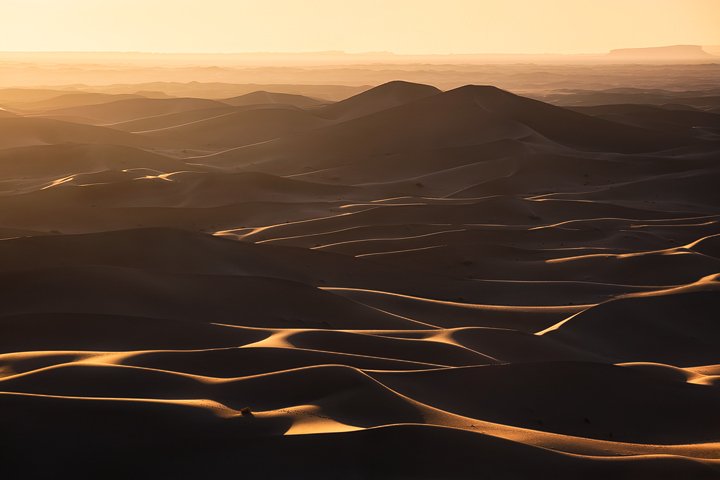
Landscape Photography
The desert is a great place for landscape photography. In the dunes, you'll find endless opportunities to take mesmerizing photos. Even during my third visit to the Erg Chigaga, I found new perspectives. The only important thing is to take your time. Many tours to the Erg Chigaga stay just one night in the desert. It's too short. Plan at least two days and spend your time hiking through the dunes around the camp.
Those scouting trips are essential and best done during the daytime. Familiarize yourself with the desert to get the best photos. During your hikes, use your cell phone's GPS and mark spots of interest on Google Maps. If you bought a Moroccan SIM at the Airport, you'll have internet in the desert. It is a prerequisite for setting markers, which doesn't work with offline maps. Also, don't forget to set a marker for the camp. Once it gets dark in the desert, you'll otherwise be lost.
You find the best photo spots east of Camp Al Koutban toward the pointy, large dune. You cannot miss it. From there, you'll have fantastic views and can continue your journey east toward more viewpoints and photo locations.
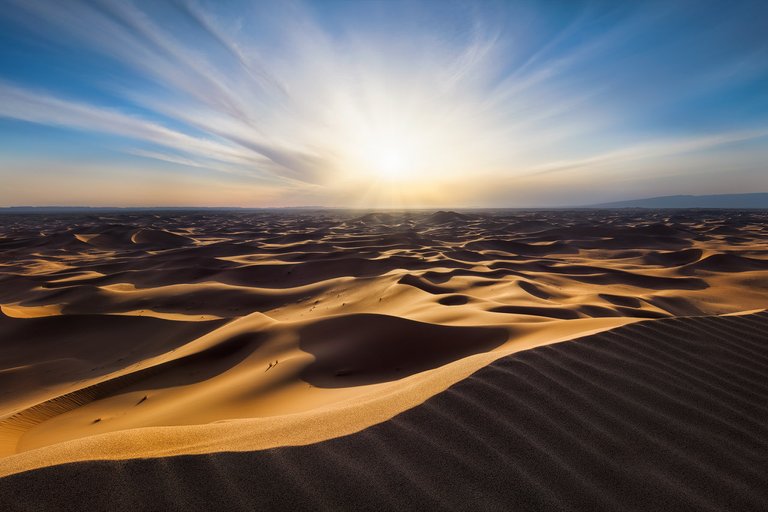
In the evening, the big dune is the place to be. Head there at least 90 minutes before sunset. You want to be up there when the sun starts descending toward the horizon. As the shadows get longer, the rims of the dunes begin to glow. It's when you'll get the best photos.
Don't wait too long before your return to camp. It gets dark quickly after sunset, and you'll lose any orientation. Without the GPS on your phone, you'd be in trouble.
Night Photography
There's nothing like seeing the night sky in the desert for the first time. I have never experienced the Milky Way this clearly - it's amazing. Naturally, I also wanted to photograph it. If you visit in February, like I did, the Milky Way will be perfectly situated above the horizon around two hours before sunrise. And since the sun rises as late as 7:30 am, you don't even have to get up in the middle of the night to photograph it.
To get the best results, find the composition you want to photograph the day before and mark the spot on Google Maps. Then, use PhotoPills or Plan It to check the location of the Milky Way in the morning. When you return in the morning, photograph the stars and leave the camera in place for one more hour. It will be bright enough to photograph details in the landscape. This process and the editing of the photos is called time blending. I explain this approach in all its detail in the video below.
Photo Editing Tutorials
Around sunrise or sunset, the dunes will get a golden hue. In RAW images though, this color is often diminished. A remedy for it is adding a lot of contrast to your desert photos as I show in the following video.
For night photos, the process is different. For the best results, I developed a photo editing workflow, which I share in all its detail in my Desert Nights Tutorial.
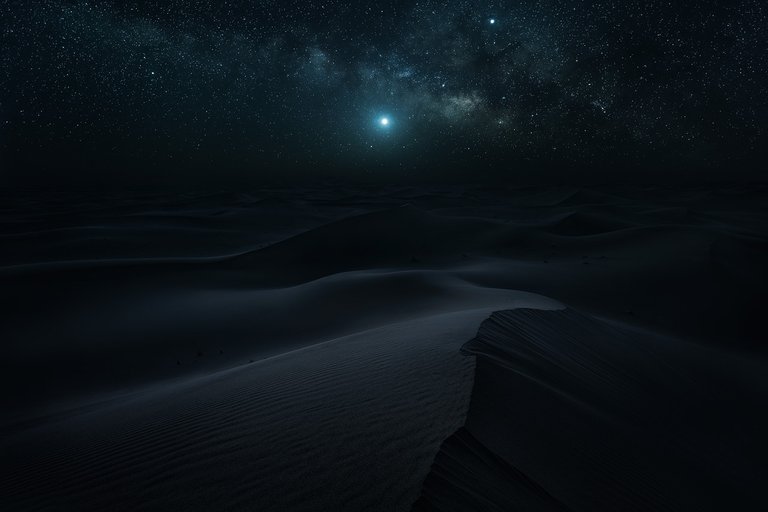
Equipment for Desert Photography
Desert photography can be hard on your equipment if it's windy. It's why you should bring something to cover your camera and lens. Using OpTech rain sleeves is a way to do that.
I recommend gaiters to prevent sand from creeping into your shoes when hiking in the dunes. It helps especially during descends. A bright flashlight is also mandatory.
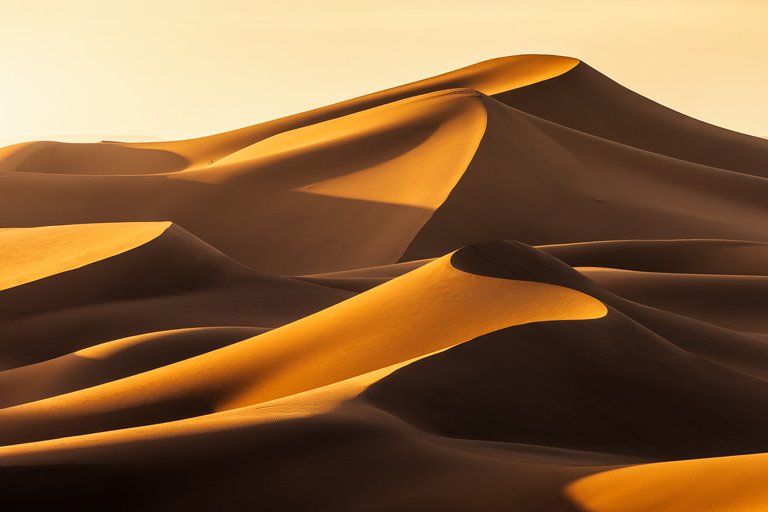
When it comes to camera gear, you'll want the following two types of lenses in your bag: A wide angle lens to capture sweeping views across the dunes and for night photography. I recommend the Canon RF 15-35 f/2.8 lens for Canon. The second lens you must bring is a telephoto lens. A 100-400mm or 100-500mm lens is perfect for photography from the highest dune. But you can also take great photos with a 200mm lens. I use the Canon RF 100-500 lens, which gives me a great range.
A robust tripod should also be part of your photography kit. Without it, you won't be able to capture the night sky.
Conclusion
The Erg Chigaga is always worth a visit for landscape photography. There's just so much to see and photograph. The desert is also a great place to unwind, to get close to nature, and to relax. If you ever visit Morocco, make sure to journey into the desert. And if you are a photographer who wants a guided experience with the best photo spots already planned, consider joining my photo tour.
Congratulations, your post has been added to Pinmapple! 🎉🥳🍍
Did you know you have your own profile map?
And every post has their own map too!
Want to have your post on the map too?
Congratulations @mibreit-photo! You have completed the following achievement on the Hive blockchain And have been rewarded with New badge(s)
Your next target is to reach 75000 upvotes.
You can view your badges on your board and compare yourself to others in the Ranking
If you no longer want to receive notifications, reply to this comment with the word
STOPCheck out our last posts:
WOW, some absolute stunning shots here.
Travel Digest #2105.
Become part of our travel community:
- Join our Discord
Hiya, @livinguktaiwan here, just swinging by to let you know that this post made it into our Honorable Mentions in Your post has been manually curated by the @pinmapple team. If you like what we're doing, please drop by to check out all the rest of today's great posts and consider supporting other authors like yourself and us so we can keep the project going!Congratulations @mibreit-photo! You received the biggest smile and some love from TravelFeed! Keep up the amazing blog. 😍 Your post was also chosen as top pick of the day and is now featured on the TravelFeed front page.
Thanks for using TravelFeed!
@for91days (TravelFeed team)
PS: TravelFeed is in social media to reach more people, follow us on Facebook, Instagram, and Twitter.